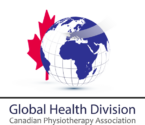Photography and Equipment Policy
In response to member interest and relevance to global health work in the field of physiotherapy, the GHD has created relevant policies that are important for review prior to engaging in global health work.
Ethical Photography
Created in 2013, these guidelines are what we as the GHD executive use to preserve the dignity and privacy of our patients, colleagues and the general humanity around the world. Photographs can greatly alter the perceptions, opinions and judgments of friends, families and acquaintances. Therefore we need to be very careful with what we share because a photograph can never truly depict a situation or event and photographs are open to interpretation. Therefore we have devised these guidelines to help you determine what photos you should or should not publish upon return from traveling, volunteering, working, studying or researching globally.
- We do not use/publish photographs of patients or others we may have met and/or photographed in presentations, for marketing purposes or through social media (Facebook, newsprint, etc.) without their informed consent
- We do not publish photographs of public demonstrations (religious, political, etc.) or other such events where you are unaware of the meaning, in any form of social media as to avoid causing undue harm to individuals or groups
- We never portray our patients as useless, helpless or inadequate or in any manner that is dehumanizing or disrespectful
- We do not edit photos so much that they are a misrepresentation of the actual scene
- We do not use photos to exploit public sympathy
- We do not publish/display pictures without context and/or that may fuel prejudice
- We strive to demonstrate a partnership in global development and a respect of diversity through our images
- We strive to show positive messages through our photos
In addition to violating privacy and human rights, poverty porn is damaging to those it is trying to aid because it evokes the idea that the poor are helpless and incapable of helping themselves, thereby cultivating a culture of paternalism. Poverty porn is also detrimental because it is degrading, dishonoring, and robs people of their dignity.
References
Equipment Donation
The GHD executive uses the following guidelines when considering equipment donation:
- Purchase locally sourced equipment whenever possible.
- Communicate with the organization to understand what equipment, if any, they require.
- Understand that the organization has a right to decline the equipment and ask for a different type of donation instead, such as a financial donation.
- Ensure that the quality of the item is acceptable for use in Canada. There should be no double standard in the quality of equipment.
Things to Consider
- Would the equipment be useful to an organization in your own community, such as a university or a hospital?
- Is the equipment in working order or does it require repair or calibration?
- Does the equipment require ongoing maintenance and is there technical support available in the target community?
- What is the lifespan and current age of the equipment?
- What is availability and cost of replacement parts and/or consumables used with the equipment?
- Is there space to store the equipment at the organization’s facility?
- Are there are ongoing costs to run the equipment (e.g. electricity)?
- If applicable, which type of electrical outlet is required?
- What are the shipping costs and who is paying for these costs?
- Is the item custom made? If so, is it useful for another person/population?
- How will the members of the organization be trained to use the equipment and will resource materials be provided?
- Is there a manual that will accompany the equipment and is it printed in the native language of the organization’s members?
- If you have confirmed that donating equipment is indicated based on the above guidelines, confirm the logistics of the donation with the organization.
- Ensure proper follow up and evaluation with the organization.
References
World Council of Churches & Community Initiatives Support Services. Guidelines on medical equipment donation. Retrieved from http://www.drugdonations.org/eng/richtlijnen/eng_guidelinesequipmentdon.pdf
World Health Organization. (2000). Guidelines for health care equipment donations. Retrieved from http://www.who.int/medical_devices/publications/en/Donation_Guidelines.pdf?ua=1
Become a member
LoginBecome a member
Login